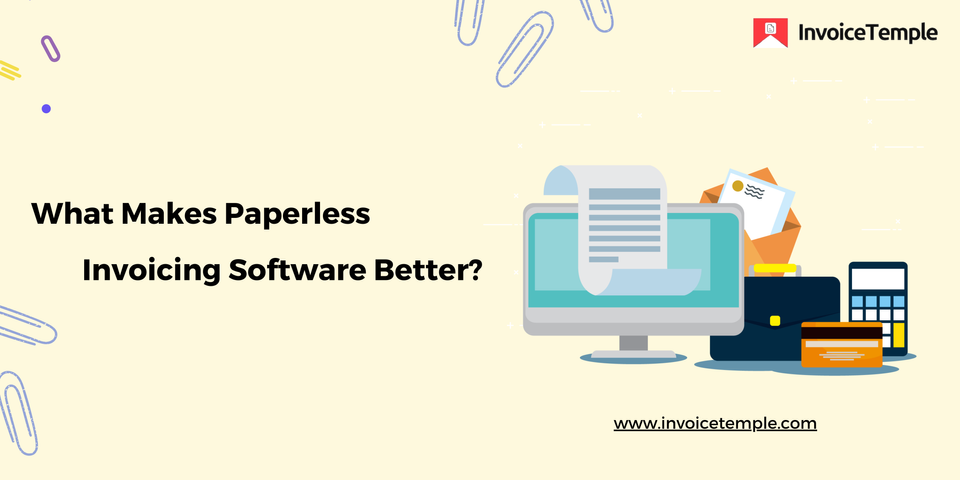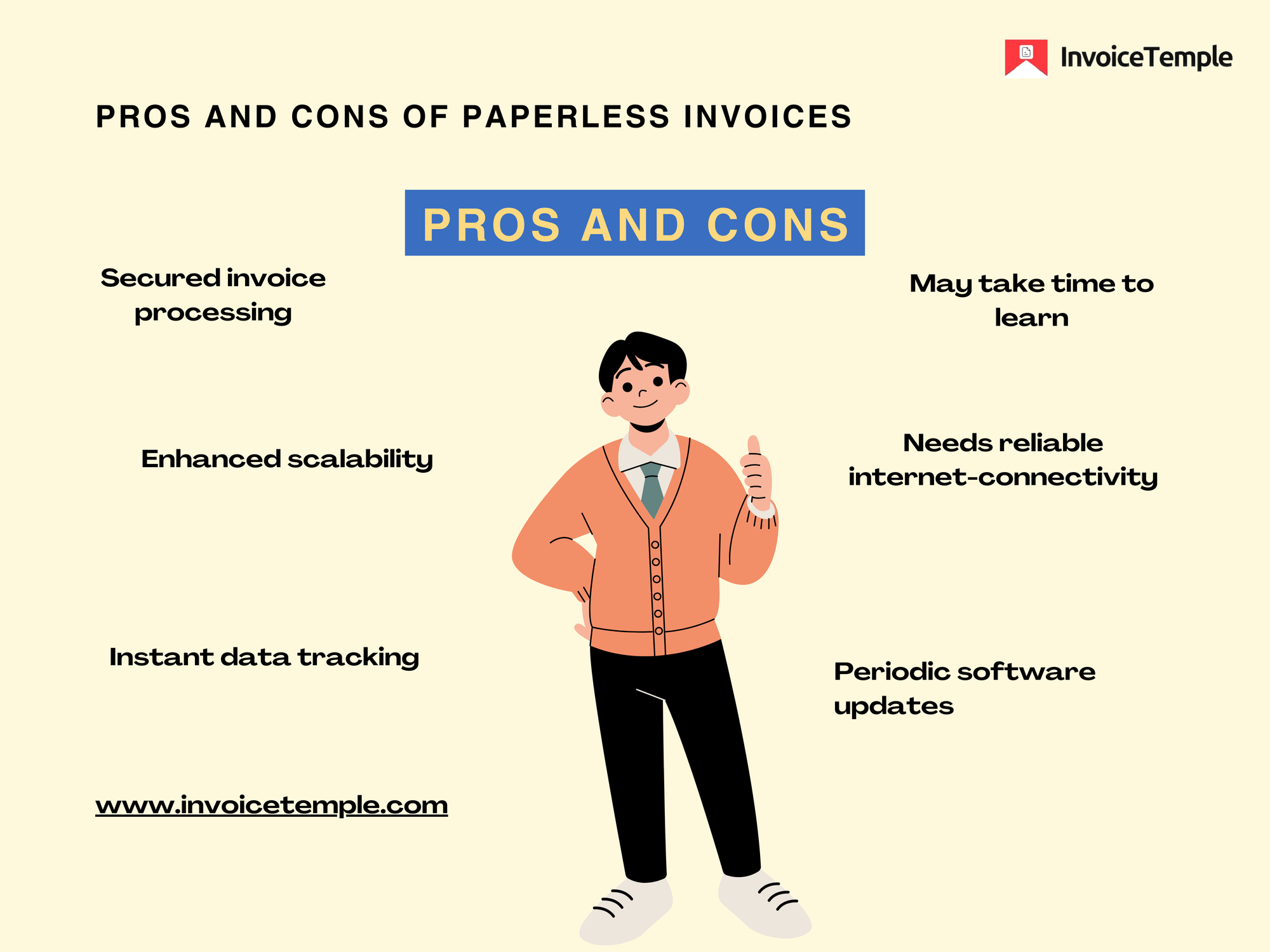What Makes Paperless Invoicing Software Better?

Going digital in day-to-day activities is a game-changer in this digital era! For simple tasks, most companies have started to significantly implement digital facilities. It can give a smooth boost to the operations of an organization.
Paperless invoicing software enhances your experience in the billing process. It streamlines a substantial number of invoices and payable processes. The traditional billing method is a time-consuming task and often prone to errors. It can also require physical storage, handling, and processing of the bills.
Let’s learn more about the smartest solutions for the quickest invoice generation and instant delivery.
Why Paperless Invoice?
Paperless invoicing is a convenient, enhanced and secured approach to processing your billing procedure. Adopting this method reduces the requirement for manual billing for data entry and customer details. The repetitive process has to be manually entered for the first time. Most importantly, it reduces lost or misplaced bills and promotes speedy payments.
A user can easily track certain information about their customers. This could make it easier for businesses to manage cash flow and maintain better relationships with clients. The use of paperless invoicing software is a modernized approach to financial reporting
Most small businesses can benefit from cutting down on the cost of physical printing materials. It is a strategic move for the sustainable development of a firm.
Benefits of Paperless Invoices
Reduces Time Consumption
Paperless invoices are a time-saving process for managing client documents. After the initial entry of clients and product details, the user can easily automate the audit of each invoice. One can substantially reduce the time taken for sending, receiving and processing the digital invoices.
In a blink of an eye, you can efficiently automate the process of generating an invoice. This will help you speed up the payment process. Also, you can avoid delayed payments.
Error-less Auditing
A paperless invoice reduces human errors in data entry and calculates the total cost. Manual entry of each bill payment may often lead to errors and the loss of customers’ invoice documents. Automated tools can cross-reference data, detect discrepancies, and record accuracy. This leads to fewer mistakes, easier reconciliation, and a more straightforward auditing process.
Eco-friendly Processing
A digital invoice can minimize the need for paperwork. One can avoid the requirement of purchasing materials in the traditional billing process. By eliminating the need for paper, ink, and physical transportation, paperless invoicing significantly reduces the environmental impact of traditional billing methods. This eco-friendly approach aligns with modern sustainability goals and enhances a company’s green credentials.
Digitizing Small Businesses
Most paperless systems integrate seamlessly with accounting software. It offers users the ability to manage their finances cost-effectively. Clients can check real-time insights, customer information, and payment status on their smart devices. Moreover, one can share the invoice’s e-copy with their customer from anywhere.
Paper-based vs Paperless Invoices
Paper-based invoicing has been a prevalent practice for a longer period. It has to deal with the manual work of printing, mailing, and storing physical invoices. It affects the speed and accuracy of the inputs.
While processing numerous invoices, one may be prone to errors in listing down the purchases and calculations. With the large consumption of paper usage, the real-time data checking may often take time for even a single client. It may also lead to paper accumulation and take time to check a single client’s billing details. Moreover, the traditional billing procedure is quite outdated and consumes time.
Whereas in e-invoicing, the required data has to be initially updated. The user can store those details in their systems. And you can use that data whenever they need to run proper operations. You can edit or modify it whenever you need.
The client can provide the fastest delivery of billing to your customers. They can also track their unpaid invoices for speedy settlements. If you want to check a particular client’s invoice, you can easily access and track the progress. It speeds up the billing process with accurate invoice details.
Pros and Cons

Pros of Paperless Invoices
- Secured invoice processing
- Proficient client data management
- Enhanced scalability
- Access the customer’s data remotely
- Instant data tracking
- Customized templates
Cons of Paperless Invoices
- Needs reliable internet-connectivity
- Upfront costs for software
- May take time to learn
- Requires to be drafted in specific legal standards
- Periodic software updates
Work-ease with Invoice Temple Software
To raise the bar for your brand, our free invoicing software provides user-friendly features for its clients. It simplifies the invoicing process with varied options for customization. Now, you can make your business transition easier to a paperless system.
Invoice Temple offers its customers certain attributes, including customizable templates, and robust tracking tools. Clients can efficiently streamline billing, reduce errors, and accelerate payment cycles. The software is designed to cater to all kinds of businesses. It offers scalability and integration with other digital tools to enhance overall efficiency.
Try our free invoice generation features as a trial for your alternative billing option. To unlock all standard options, get the premium version of Invoice Temple.
Key Takeaways
Paperless invoicing offers real-time tracking, instant delivery, and automated reminders for the payment process. Such features save time and provide accuracy and transparency. A paperless approach to processing invoices can also minimize material usage, such as paper and ink. The client can focus more on their tasks than taking time to scribble down the product details. This helps you run seamless financial operations.
Making smart choices in your small business tends to be sustainable. With that, your brand can stay competitive in an increasingly digital marketplace.
